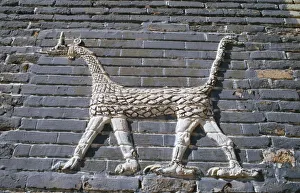Glazed Brick Collection
Glazed brick, an ancient form of artistic expression, has left its mark throughout history
All Professionally Made to Order for Quick Shipping
Glazed brick, an ancient form of artistic expression, has left its mark throughout history. From the Assyrian decoration in 1898 to Maison Nelissen in Brussels, Belgium, glazed bricks have captivated artists and viewers alike. One such artist who embraced this medium was Alan John Ainsworth. His creations at 94 Rue Tenbosch in Brussels showcased the beauty and versatility of glazed bricks from 1902 to the present day. But it is not just modern art that showcases the allure of glazed brick. The Ishtar Gate in Babylon, Iraq stands as a testament to its timeless appeal. Dragons and bulls adorned these magnificent structures, their vibrant colors bringing life to the ancient city. The Tower of Shah-Zindeh Mausoleums further exemplifies how they are transcend time. Built in the 14th century, its intricate designs still mesmerize visitors today. Even centuries before that, during the reign of King Nebuchadnezzar II, glazed brick reliefs were used extensively on the Ishtar Gate. These reliefs depicted mythical creatures like mushrushu and lions with stunning detail from as early as the 7th century BC. Not limited to mythological figures alone, even archers found their place on glazed brick reliefs at places like Palace of Darius I in Susa around 500 BC. Glazed brick has proven itself as more than just a building material; it is a canvas for creativity and storytelling across cultures and eras. Its enduring beauty continues to inspire artists and captivate audiences worldwide.





















